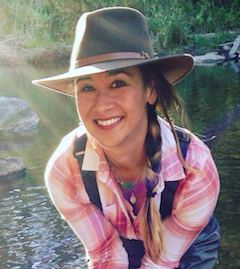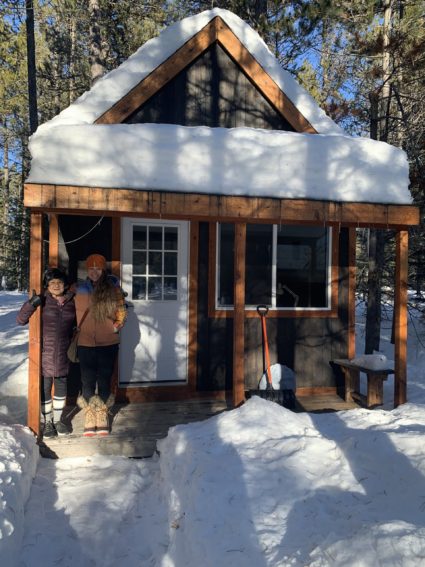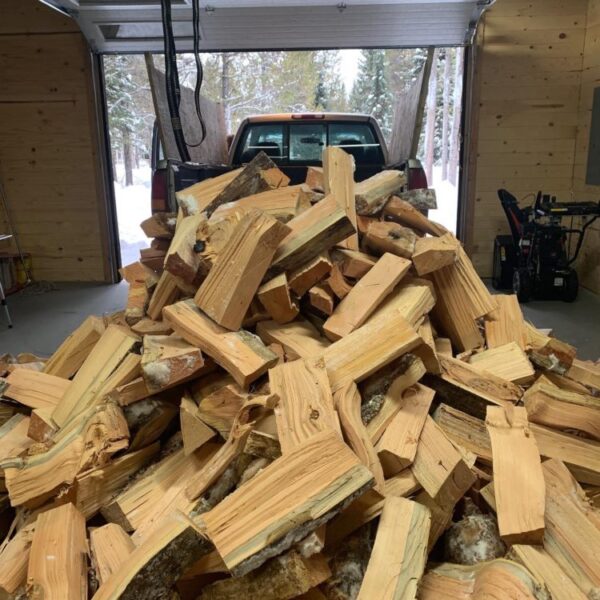As I write these words I am propped up in bed, six days into COVID, chipping through my fugue at a 6,000-word story that was due before I got COVID. It’s 99 degrees outside my window in Boise, Idaho, in what has become a worrisome extended summer. But in my mind I’m splitting wood in the middle of winter. Building my woodpile, log by log.
Last winter, as it began to snow, I bought my first cord of wood. Upon delivery to a cabin not much bigger than Thoreau’s, it was flung, with no rhyme and even less reason, into a pile nearly as tall as me. It was left to me to move it to the woodshed and store it in neat stacks.

At the time, I was struggling through a first draft of a story, trying to figure out the right structure. I think of story structure as a deliberate sequence of revelation, a progression ruled by what you let the reader know, and when. I was fiddling without much success with the sequence, rearranging the pieces, trying to make them fit together just so.
I would stare for awhile at the keyboard. I would look up and stare out the window at that mountain of wood. I felt overwhelmed by both, not sure how to move forward with my story, not sure how to begin with the wood.
If you’ve never had a cord of wood dumped in front of you, I’ll just say it’s a lot of wood. A full cord is 128 cubic feet of material. That’s about three trees’ worth, if the trees were just big enough to wrap your arms around. Depending on the type of wood and its moisture level, it weighs between 2,000 to 3,000 pounds.
I was looking at a ton-plus of work.
One log, one word at a time
There was only one way to begin: I tugged on jacket, boots and gloves and trudged outside. Then I tucked a log or two under each arm and walked the 10 or 15 steps between the heap and the woodshed. There, I studied the shape of the logs and tried to fit them together in a sturdy sequence. Sometimes the gaps between logs weren’t quite right — they left too much space for the stack to be stable or too little for the wood to dry — so I had to revise my choices. Then I did it again. And again. And again.
Related stories
As my wood pile rose, I realized that what I was doing felt a lot like writing a first draft. At first, the task is so daunting that it’s hard to even begin. But there is only one way: Sit down. Study the material. Put words on a page. Move them around until they fit to build a sturdy story, paragraph by paragraph.
Some days — most days — the words feel even heavier than chunks of wood, more like boulders, the story like a crumbling stone wall from Robert Frost’s New England. But as long as you keep building the wall, keep fiddling with the words, order and reorder and order again, the story will emerge.
It took three or four days to finish my wood pile. I worked in little intervals, whenever I needed a writing break. I remembered how much I enjoy the meditative nature of being in motion, of doing something physical and repetitive, demanding attention but not all-consuming thought.
Physical movement and manual labor counterbalance the agonizing stillness and internal discipline that writing requires. I believe it distracts the conscious, critical part of the mind, so the unconscious — that part that knows how to write — can get the work done. It’s sort of like handing a dog a chew toy, as my writer friend Brendan O’Meara put it. Or, as my father once told me, “Even when you’re not writing, you’re writing.”
I realized, then, that for all those years, my father wrote with a fishing rod in his hand.
Procrastination? Or productive creativity?
I can write while weeding, while chopping carrots or while snowblowing the driveway (which, by the way, feels as satisfying as reading smooth prose). But since moving to the Pacific Northwest, my favorite way to write is by splitting wood and building a fire.

You have to be present while splitting wood or you might wind up with an axe in your foot. When building a fire in a cold wood stove, you have to pay attention. The moment you get distracted, it sputters out. You have to establish a steady burn and a base of coals before you can pile on more wood. Sometimes you add a log in not quite the right place, and the fire begins to suffocate, so you have to move things around. You have to keep poking at it.
After much poking and moving words around, I finally settled into a solid rough draft of the story I was writing last winter. The process started feeling less painful and more satisfying. I finally got past that I’ve-forgotten-how-to-do-this agony that accompanies every first draft of every good thing I write.
Which brings me to one more salient point about the benefits of splitting wood: Productination. Or maybe I’ll call it procrastivity.
There’s an art to taking writing breaks that feels like procrastination, but actually is productive. In the act of putting off the task that’s big and important, you can accomplish scores of little tasks that take less time and mental energy, but generate momentum. That momentum keeps your mind humming for the Big Task even when you’re taking a break from it.
When I was asked to write about my woodpile for Storyboard, I started to write the litany of reasons I didn’t have time. Then I realized that typing a list of (valid) excuses would take as much time and energy as writing the essay itself. So this little riff became a welcome break, like a walk I’m not allowed to take because I’m stuck in bed with COVID and still have a 6,000-word story to tackle.
I’m going to take a nap now. Then I’ll get back to my wordpile.
***
Kim Cross a freelance writer and author of “What Stands in a Storm,” a New York Times best-selling account of the biggest tornado outbreak on record.



